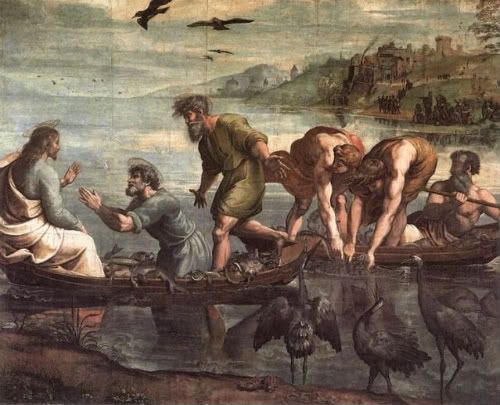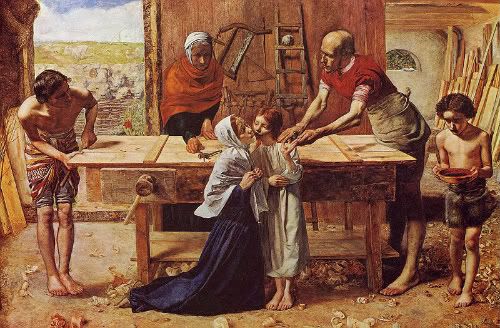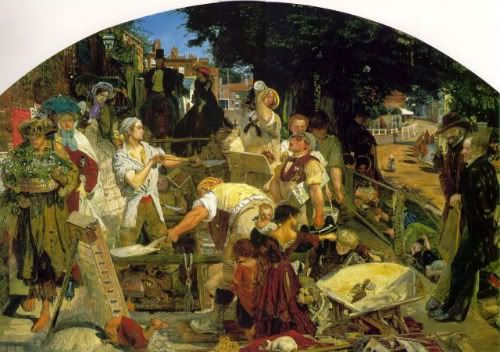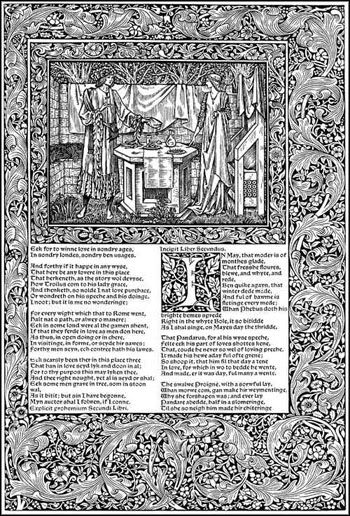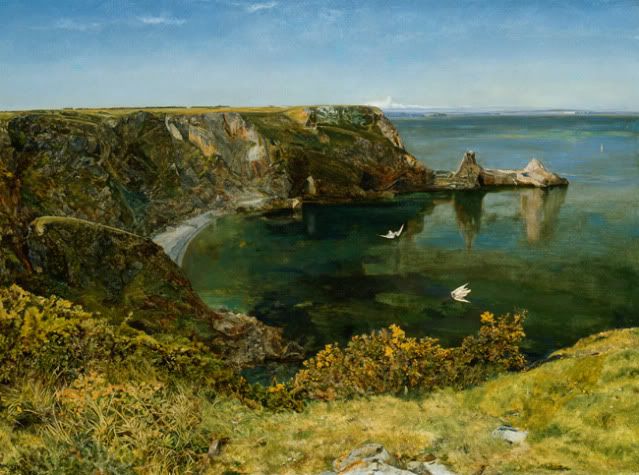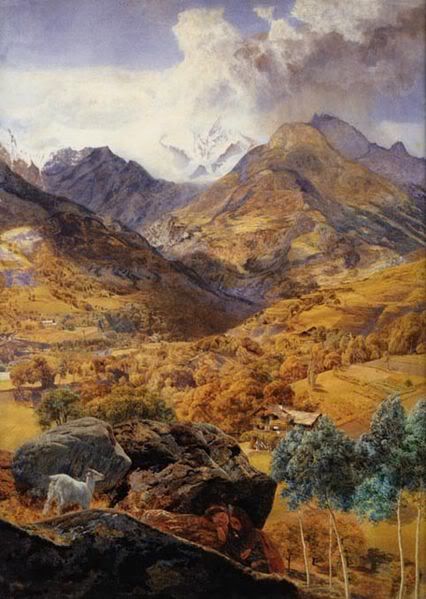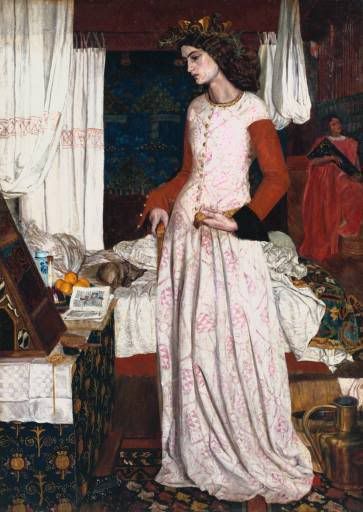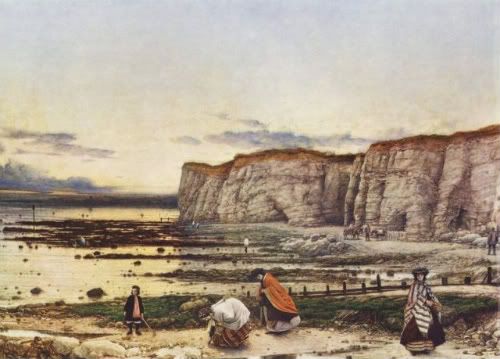Today I thought I'd share a video from Florence + The Machine. My husband actually made me sit down and watch the video because he noticed all the mythological and Pre-Raphaelite references! We first encountered Florence + The Machine while watching the Colbert Report, and our first reaction (other than noticing that she had a great voice), was that she looked like she'd fallen out of a Pre-Raphaelite painting. Apparently this is no coincidence, and you'll notice that most of her videos contain references to the Pre-Raphaelites, though the video for "Rabbit Heart" is one of the most overt. From the minute you see the water behind her you can tell this is going to end in a send-up of the Lady of Shalott!
For an even heavier dose of the Lady of Shalott, check out The Band Perry's "If I Die Young". My daughter actually discovered this one on Vevo the other day!
Someone from the band is clearly a big fan of the Pre-Raphaelites! Of course Lady of Shalott is the most obvious reference (the video actually closes with a shot of Tennyson's poem), but I thought the scene at :38 (with the mother at the window) was a little evocative of John Everett Millais' Mariana. It's a very well done video, and the song is beautiful as well.
Tuesday, July 26, 2011
Florence + The Machine, The Band Perry and the Lady of Shalott in Music Videos
Posted by
Margaret
at
4:09 PM
5
comments
![]()
![]()
Labels: millais, music, mythology, pre-raphaelites
Friday, March 18, 2011
It's all about perspective...
It's fascinating how perceptions of art change over time.
As you may recall, the Pre-Raphaelites were so named because they rejected the Royal Academy's unquestioning devotion to Raphael's style of painting. There is still some question as to whether the Pre-Raphaelites were primarily focused on rejecting Raphael himself (less likely), or whether they merely disdained the Academy's insistence that they ape the Rapahel-like style of painting. Either way, the Pre-Raphaelite Brotherhood rejected slavish devotion to the artistic heroes of the past, and Raphael was one of the most obvious targets.
The Miraculous Draught of Fishes, 1515 is a perfect example of what irked the Pre-Raphaelites about Raphael. It is unquestionably a lovely work, but also seems a tad insincere. The subjects are posed in an unnatural way, and their grand gestures seem a bit overwrought, though you have to love the fellow on the far right who seems determined to show off his abs and bulging triceps. But on the other hand, Raphael's work was also dignified, beautiful and graceful, which is doubtless why the Academy used him as a standard example for their students.
Of course, it's ironic that one of the chief contemporary criticisms of the Pre-Raphaelites is that their work is chocolate-boxy and picture-perfect (the shoe is on the other foot now, eh?). I'm sure most members of the PRB would be stunned that their work, once so controversial, is now decried as downright twee (in the future will we look back on the work of the Young British Artists and think of their work as cute? That's a scary thought...).
Stimulating...or saccharine?
Over time, I have grown to appreciate (and often prefer) contemporary art, and although I still enjoy the work of the Pre-Raphaelites, I probably wouldn't display it in my home. From my perspective, the work of the PRB is an important part of art history that was very influential for generations of artists (whether they want to admit to it or not), and I love to study it. But I wouldn't like to see artists today imitating the style of the PRB or - for that matter - the style of any other artists or historical period.
What do you think? Would you like to see the artistic style from one of your favourite historical periods come back in fashion? Or do you prefer to keep the past in the past?
Posted by
Margaret
at
1:59 PM
9
comments
![]()
![]()
Labels: aesthetics, art, philosophy, pre-raphaelites
Tuesday, February 15, 2011
Ford Madox Brown Exhibit this Fall at Manchester Art Gallery
From Saturday, September 24, 2011 - Sunday, January 29, 2012, Manchester Art Gallery will be running a major exhibition of the works of Ford Madox Brown. Over 150 of Brown's works will be showcased, including well-known works such as Work (shown above) and The Last of England.
The exhibit will pay special attention to Brown's role in the Pre-Raphaelite movement and highlight his unique methods. Fans of the Arts and Crafts movement will be pleased that, in addition to his paintings, Brown's forays into furniture and stained glass will also be featured.
If you miss the Manchester venue, the Museum voor Schone Kunsten in Ghent, Belgium, will also be hosting the exhibit from February 25 - June 3, 2012.
Ford Madox Brown: Pre-Raphaelite Pioneer will be curated by Julian Treuherz, an independent art historian and curator who specializes in Victorian art.
The exhibit catalogue will be available both online and in the museum giftshop, so even if you can't make it to Manchester, you'll have the chance to experience it.
For more information, see the Manchester Art Gallery's website.
Image courtesy Wikimedia
Special thanks to Philip Ebbrell for bringing this to my attention!
Posted by
Margaret
at
12:33 PM
2
comments
![]()
![]()
Labels: ford madox brown, pre-raphaelites
Friday, January 7, 2011
The Poetry of Drawing: Pre-Raphaelite Designs, Studies and Watercolours
The Poetry of Drawing will include pieces from the most prominent members of the Pre-Raphaelite movement, including all the original members of the PRB, Elizabeth Siddal, Edward Burne-Jones, Frederick Sandys and Simeon Solomon. Later artists, such as Aubrey Beardsley, who were influenced by the Brotherhood are also included, as are the Arts and Crafts contributions of William Morris, William de Morgan and Florence Camm.
For those of you who are unable to attend, the exhibition's curator has created an illustrated volume entitled Pre-Raphaelite Drawing. The book will be published by Thames and Hudson. I would love to see this exhibit in person, but if I don't get the chance, I will definitely be looking into the catalogue!
For more information and ticket prices, please visit the Birmingham Museum's exhibition website.
Image above is William Morris' sketch for his Trellis wallpaper design.
Posted by
Margaret
at
3:13 PM
4
comments
![]()
![]()
Labels: edward burne-jones, frederick sandys, lizzie siddal, millais, museums, news, pre-raphaelites, rossetti, william holman hunt, william morris
Friday, December 10, 2010
William Morris' Kelmscott Chaucer on Display in Buffalo, NY
My University library has a facsimile copy of the Kelmscott Chaucer, but I've never seen an original up close. The facsimile itself is nothing to sneeze at - it's a gorgeous book. It never hurts to add it to your Christmas list, though $650 for the gorgeous Folio Society edition might be a bit steep (though it pales in comparison to the real deal - the genuine article recently sold in New York for $160,000 USD). There are some nice editions available on Amazon.com for considerably less, though. I got my sister this very pretty edition (which only includes the Canterbury Tales, but it's a lovely hardbound edition) for under $20 a couple of years ago. I'm afraid I would dissolve into tears if my daughter tore up a folio edition, but at less than $20, this copy is probably just the ticket for a family with small children.
The Kelmscott Chaucer gives readers a sensual experience. I still remember the first time I picked it up and thought "this is what a book should be like." Sir Edward Burne-Jones illustrations are stunning, and the borders have exquisite details that the eye can follow for hours. In general, I'm a bit of a minimalist when it comes to my books. I know that there have been many tomes written on decorating with books, etc., but I personally believe most books really aren't that attractive. They take up too much space! As a result, I tend to either borrow from the library or read eBooks. There are not that many books I consider worth having physical copies of, but this is one of them. As Morris said, "have nothing in your houses that you do not know to be useful or believe to be beautiful." This is certainly an item that any fan of William Morris and Pre-Raphaelites would be thrilled to find under the tree.
For more information on the Kelmscott Chaucer, visit the Buffalo Library's exhibition website. The Kelmscott Chaucer will be on display until January 30, 2011
Posted by
Margaret
at
12:49 PM
5
comments
![]()
![]()
Labels: books, edward burne-jones, kelmscott press, news, pre-raphaelites, william morris
Monday, November 22, 2010
Did the Pre-Raphaelites Suffer from "Blurred Vision?"
This morning I came across a less-than-enthused review of "The Pre-Raphaelite Lens" in the Washington Post. In the article, Andy Grundberg criticized what he termed the "blurred vision" of the Pre-Raphaelites. And while Grundberg retained some admiration for the work done by Pre-Raphaelite landscape artists, he condemned the Brotherhood with broad strokes, arguing that "its members claimed to be interested in realism and truth" but were "far more taken with notions of fiction and theatricality."
Grundberg was a photography critic for the New York Times for many years, so it's not surprising that he prefers the Pre-Raphaelites landscapes and photography to their paintings. But his criticism of the PRB is pretty standard. Many modern viewers can appreciate the work of artists like John William Inchbold (whose photograph-quality painting of Anstey's Cove is pictured here), and even Ford Maddox Brown, but remain perplexed by the romanticism of Dante Gabriel Rossetti and Sir Edward Coley Burne-Jones.
I was particularly struck by Grundberg's backhanded compliment that Julia Margaret Cameron and Henry Peach Robinson had "managed against odds to transcend their subjects' goofy origins in Arthurian legend." So now it's "goofy" to be inspired by myths and legend? Greek myth has inspired countless artists and is (quite rightly) not regarded as a "goofy" source of inspiration. Why should ancient British myths be seen differently?
Mythology is such a rich source of inspiration for artists, and it saddens me to see it dismissed off-hand. Many members of the PRB were actually very interested in a "modern" approach to art and design. They recognized that British art had become mired in convention and instead attempted to use the classics as a foundation to build from that would allow them break free from traditions that had become oppressive to artists. Even William Morris, whose passion for the middle ages is well-known, was not attempting to imitate medieval design, but to use it as a source of inspiration to create a better future.
Apparently, people today are confused that a a group that claimed to be visionary would lean so heavily on mythology and the classics for inspiration. Contemporary artists and (and their adoring critics) have the hubris to claim that they have re-invented the wheel, or are totally unencumbered by the influence of others from the past (the Young British Artists come to mind). And while this unfettered arrogance is intriguing, and can sometimes produce fascinating work, it also runs the risk of alienating the public with its hollow promise of unbridled innovation. A connection to the past and an understanding of our collective unconscious is not "goofy" - it's a fundamental part of the creative process.
Posted by
Margaret
at
4:08 PM
14
comments
![]()
![]()
Labels: Arthurian legend, edward burne-jones, medieval, mythology, pre-raphaelites, rossetti, william morris
Monday, October 18, 2010
Karen Elson's Pre-Raphaelite Inspired Music Video "The Truth is in the Dirt on the Ground"
Fashion model Karen Elson is making her foray into the music business with her new album The Ghost Who Walks. She recently released the album's first music video, for the track "The Truth is in the Dirt on the Ground." The video is chock-full of Pre-Raphaelite references. There are numerous allusions to Pre-Raphaelite paintings here - I was particularly reminded of Waterhouse's Ophelia (because of the Queen Anne's Lace) and his Lady of Shalott (of course, parts of it are also quite reminiscent of Kate Bush's "Wuthering Heights"). With her vibrant scarlett locks, Elson has long been described as a Pre-Raphaelite beauty - I'm glad to see that she's embracing the label in her new music video!
The song is quite catchy, and the sound, which her husband, Jack White of the White Stripes, describes as "folk country gothic" is very appealing. I've been humming it ever since I saw the video this morning.
Posted by
Margaret
at
3:44 PM
9
comments
![]()
![]()
Labels: music, news, pre-raphaelites, waterhouse
Thursday, September 16, 2010
Pre-Raphaelite exhibits at Oxford and Cambridge: Pre-Raphaelites and Italy and Pre-Raphaelite Portraits by John Brett
My family and I enjoyed a wonderful--if slightly frenetic--weekend visiting family in Washington state. It was quite the whirlwind weekend - shopping, a wedding and visiting a couple of friends. We had a great time though. Seattle is a beautiful city, and Washington is so pretty in general...but it did go by so quickly that the whole thing was a bit of a blur. Fortunately, Edmonton was so cloudy when I got back that I feel like I'm still in Washington! The strangest part is that, even though I was only gone for a weekend, when I returned, Edmonton was already in the middle of Autumn. Trees are changing colors and losing their leaves already! I'm excited though - Fall really is one of my favourite times of year.
Posted by
Margaret
at
1:20 PM
5
comments
![]()
![]()
Labels: art, museums, news, pre-raphaelites, rossetti, ruskin
Friday, September 10, 2010
New Theodor von Holst Exhibition in Cheltenham
Posted by
Margaret
at
3:57 PM
4
comments
![]()
![]()
Labels: museums, news, pre-raphaelites, rossetti
Tuesday, August 17, 2010
Rare Millais Sketches Found in Led Zeppelin Record Sleeves
Former Led Zeppelin guitarist Jimmy Page is one of the world's best known collectors of Pre-Raphaelite art. But he nearly lost a handsome stash of sketches by John Everett Millais as the result of what appears to be an auction house mix-up.
Posted by
Margaret
at
2:56 PM
9
comments
![]()
![]()
Labels: millais, music, news, poetry, pre-raphaelites
Saturday, August 7, 2010
Elbert Hubbard's Little Journeys
If you haven't already seen it, take a moment to visit Stephanie Pina's Lizzie Siddal blog to read Little Journeys to the Homes of Great Lovers: Rossetti and Siddal. Stephanie found a 14 volume set of Elbert Hubbard's Little Journeys at a local bookshop and she's taken the time to transcribe and scan Hubbard's rendition of the story of Dante Gabriel Rossetti and Elizabeth Siddal. I had a wonderful time reading it - it's a charming and entertaining version of the story. I found Hubbard's non-judgmental approach to Rossetti quite refreshing (you could say he tries a little too hard to make excuses for him, but I think Rossetti has enough critics). The story can also be found in Volume 13 of Hubbard's Little Journeys, which is available on Project Gutenberg (along with a number of his other writings).
Those of you who are familiar with the Arts and Crafts movement in the United States will recognize Elbert Hubbard as one of the founders of the Roycrofters and the Roycroft Press. (His magazine, The Philistine, which was published by the Roycroft Press, is nearly as well known as the The Germ). Hubbard was heavily influenced by William Morris' philosophy of the Arts and Crafts movement, and the Roycroft community in East Aurora, New York, was probably the most ardent attempt to see Morris' socialist vision put into practice in the real world. His art colony may not have survived, but his writings remain available to readers as a window into his world.
Posted by
Margaret
at
8:35 AM
4
comments
![]()
![]()
Labels: arts and crafts, lizzie siddal, pre-raphaelites, rossetti, william morris
Saturday, July 31, 2010
"Useful and Beautiful" Conference at the University of Delaware Announced
The University of Delaware has announced a conference entitled "Useful and Beautiful: The Transatlantic Arts of William Morris and the Pre-Raphaelites." The conference will run between October 7-9 at the University of Delaware, the Delaware Art Museum, and the Winterthur Museum. This sounds like such an exciting conference. Unfortunately, I won't be able to attend, but I hope that some readers will go and report back!
The conference, which has been organized together with the William Morris Society in the United States, will take feature rare books and manuscripts from the University's holdings, as well as fine and decorative arts from the Delaware Art Museum. The keynote speaker for the conference will be Fred Kaplan, Professor Emeritus of English at Queens College and the Graduate Centre of the City University of New York. His address will be held Thursday, October 7, at 4:30 p.m. in the Reserve Room of the Morris Library. Dr. Kaplan has written a number of biographies,including The Singular Mark Twain; Gore Vidal; Henry James: The Imagination of Genius; Charles Dickens; Thomas Carlyle(finalist for the National Book Critics Circle Award and the Pulitzer Prize); and, most recently,Lincoln: The Biography of a Writer. His lecture, entitled “Useful and Beautiful: Henry James and Mark Twain,” is sponsored by the University of Delaware Library Associates and associated with the exhibition, London Bound: American Writers in Britain, 1870–1916, at the University of Delaware Library.
In addition to the keynote address, there will be numerous sessions by internationally recognized scholars and specialists in Pre-Raphaelite Art, and a special performance of Oscar Wilde's The Importance of Being Earnest by the University of Delaware's critically acclaimed Resident Ensemble Players/Professional Theatre Training Program.
For more information, contact Mark Samuels Lasner, Senior Research Fellow, University of Delaware Library by email at: marksl@udel.edu, (302) 831-3250; or visit them on the web www.udel.edu/conferences/uandb
The conference is priced at $150 per person, and $75 for students. There is no charge for University of Delaware faculty, students and staff.
Posted by
Margaret
at
12:28 PM
5
comments
![]()
![]()
Labels: art deco, art nouveau, arts and crafts, news, pre-raphaelites, william morris
Friday, July 23, 2010
Endless Forms: Charles Darwin, Natural Science and the Arts
"There is grandeur in this view of life, with its several powers, having been originally breathed into a few forms or into one; and that, whilst this planet has gone cycling on according to the fixed law of gravity, from so simple a beginning endless forms most beautiful and most wonderful have been, and are being, evolved." - Charles Darwin, The Origin of the Species
I ran across the website for Endless Forms: Charles Darwin, Natural Science and the Arts while doing a search to see what connections there might have been between Charles Darwin and the Pre-Raphaelites. I saw Creation, a very interesting film about Darwin a few weeks ago. The film starred Paul Bettany and I really enjoyed it. Very nicely done, in my opinion, though I know that many may have been disappointed by it. The film focused more on Darwin's relationship with his daughter than it did on science, but the movie captured the Victorian era so well, and I loved the Gothic way the story was told, so I would recommend it. At any rate, after seeing the film it occurred to me that Darwin was a contemporary of the Pre-Raphaelites, and I wondered what they had thought of them.
But what of the other Pre-Raphaelites?
One of the more direct artistic Pre-Raphaelite responses to Darwin's work that I could find was this painting by William Dyce, which was originally part of the "Endless Forms" exhibition. The picture features the artist's family gathering fossils in Pegwell Bay, near Kent. The painting, which is held today by the Tate Gallery, uses the tail of Donati's comet to cast an ominous and uncertain mood over the scene (the comet's tail is supposed to be "barely visible" in the center of the painting - I think it's one of the white spots near the top-middle area of the picture, but I can't be sure). Dyce was a devout Anglican, so the inclusion of the comet - which, conveniently, was not due to reappear for 2,000 years - is rich with symbolism.
Posted by
Margaret
at
11:12 AM
10
comments
![]()
![]()
Labels: art, museums, pre-raphaelites, ruskin
Tuesday, June 22, 2010
Dante Gabriel Rossetti's Damsel of the Sanct Grael
Dante Gabriel Rossetti painted Damsel of the Sanct Grael in 1874. Rossetti did a number of paintings related to the grail legend, and two works that depicted the damsel of the holy grail. The damsel character is referred to several times in Mallory's Morte D'Arthur, although, as was his wont, Rossetti took a number of artistic liberties in his portrayal of the damsel. Mallory describes her as "a damsel passing fair and young" and "dressed all in white." Well, Rossetti sort of skimmed over the white part...his damsel is a bit more worldly looking than Mallory might have envisioned. Her flowing hair and raised eyebrow impart some of the carnal flair that imbues Rossetti's later work. I love the grape vines that form an enticing frame around the damsel - clearly a nod to the chalice itself, which played a starring role in the Last Supper - but it's also hard not to see the Dionysian undertones. But that's what I love about Rossetti - his unabashed appreciation for both the sacred and profane.
This was Rossetti's second time painting The Damsel of the Sanct Grael. His first interpretation of the damsel was painted nearly 20 years before, and features a less-lusty and more medieval-looking maiden (modeled, I believe, on Lizzie Siddal). The early version is held by the Tate Gallery in London and can be seen here. Both images use similar symbolism (the dove and hand positions are the same), but the moods of the paintings are completely different.
Rosseti used Alexa Wilding as his model for the second damsel. Wilding posed for a number of his other works, including Venus Verticordia and Veronica Veronese.
This painting is currently in the private collection of Lord Andrew Lloyd-Weber (lucky fellow).
Image courtesy Wikimedia
Posted by
Margaret
at
1:05 PM
7
comments
![]()
![]()
Labels: pre-raphaelites, rossetti
Thursday, May 6, 2010
Utopia Matters: from Brotherhoods to Bauhaus
From May 1 - July 25, 2010, the Guggenheim museum in Venice will be presenting "Utopia Matters: From Brotherhoods to Bauhaus." The exhibit is headed by Vivien Greene, who curates the 19th and early 20th century Art at the Guggenheim Museum in New York.
Utopia Matters will examine "the evolution of utopian ideas in modern Western artistic thought and practice" and features over 70 works of art drawn from the decorative arts, design, photography, paintings and sculpture. A broad spectrum of historical Utopian art movements will be examined, including the Pre-Raphaelite Brotherhood, Primitivism, the German Nazarenes, William Morris and the Arts and Crafts movement, Neo-Impressionism, De Stijl, Bauhaus and Constructivism. The exhibit will end with works from the 1930s, when the Bauhaus was closed.
If you haven't noticed (the title of this blog is pretty much a dead giveaway), I'm quite the fan of Utopian artistic movements, so this is one exhibit I would dearly love to see. I've always been fascinated by the intersection of art and idealism, and there are countless fascinating historical examples of artistic groups and individuals who have sought to improve life through art.
Utopia Matters was first seen from January 22-April 11, 2010 at the Deutsche Guggenheim Berlin, so if you were lucky enough to attend that exhibit, be sure to leave a comment and let us know what you thought! I'm afraid a trip to Venice before July probably isn't in the cards for me, but I would love to hear what others have to say about their visits.
Image is Piet Mondrian's Composition 10, courtesy Wikimedia.
Posted by
Margaret
at
7:39 AM
7
comments
![]()
![]()
Labels: arts and crafts, museums, news, pre-raphaelites, william morris
Thursday, February 4, 2010
The Rejection of Cain's Sacrifice

I've been very busy with my little girl over the past few weeks. She's an absolute delight! Even though she's only three months old, I've been having a lot of fun reading with her. Before she was born, my husband and I bought a copy of Tomie dePaola's Book of Bible Stories. It has fantastic pictures that really capture her interest (and the stories are short, so she doesn't have trouble staying focused). At any rate, the other day I read her the story of Cain and Abel. Yikes! It's easy to forget how gory some of these stories were! I was sort of glad that she was too little to have any idea what it was about. Nevertheless, I found myself trying to explain to my infant why people do mean things, though I had a bit tougher time telling her why God was not that impressed with Cain's vegetarian sacrifice. Welcome to motherhood, I suppose! What happens when she can actually ask questions?
Anyway, today I came across this 1842 sketch by John Millais of the Rejection of Cain's Sacrifice. Millais was just 13 years old when he produced this! Even at this early age, you can see the talent Millais possessed. I love how he's drawn Cain's cloak blowing in the wind and the smoke billowing up towards heaven (notice the pious looking Abel in the background). You can see a lot more of the details in the painting if you visit it at the Birmingham Art Gallery's online gallery. Be sure to check it out!
Posted by
Margaret
at
12:50 PM
3
comments
![]()
![]()
Labels: millais, pre-raphaelites
Saturday, December 5, 2009
'Desperate Romantics' Makes Telegraph's List of Art History Books of the Year
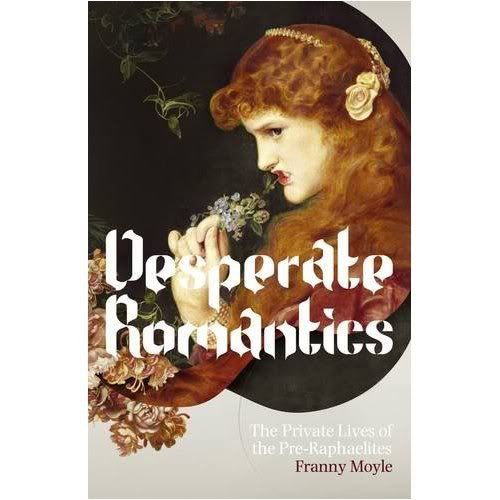
It's been a great year for the Pre-Raphaelites! Franny Moyle's book, "Desperate Romantics", which inspired the television series of the same name, was named in the UK Telegraph's list of Art History Books of the Year.
There are a number of books on the list that will be of interest to Art History lovers. For the full list, click here.
Posted by
Margaret
at
2:51 PM
1 comments
![]()
![]()
Labels: books, news, pre-raphaelites
Thursday, November 19, 2009
Pre-Raphaelite Christmas Stamps Released by Royal Mail
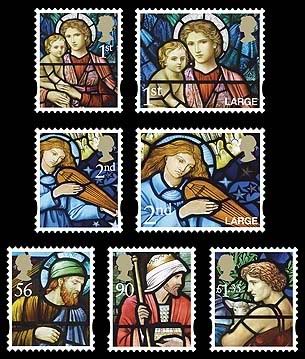
The Royal Mail has released a lovely set of Pre-Raphaelite stamps in time for the holiday season. The collection was chosen by designer Andrew Ross, who examined stained glass from churches throughout England in order to compile the artwork for the set of stamps. The final designs were taken from churches in Cumbria, Norfolk, Somerset, East Sussex and Wiltshire.The angel with the mandolin (middle) was designed by William Morris, while the Wise Man stamp (bottom middle) is from some stained glass by Edward Burne-Jones. The art for the 1st, 56p and £1.35 stamps are from stained glass created by Henry Holiday, who worked with Edward Burne-Jones in his studios.
"We are extremely privileged to have access to such a rich history of beautiful stained glass designs in churches and other buildings around the UK," said Julietta Edgar, Head of Special Stamps, Royal Mail.
"These precious images of the nativity have a timeless appeal and are a wonderful way of telling the story of Christmas here and around the world."
It appears that the stamps already have a following - Wales online reports that a number of the Pre Raphaelite stamps were stolen before they were made available to the general public. As a result, "ANYONE offered Royal Mail’s newest commemorative Christmas stamps on the cheap is being asked to contact police after a new delivery was stolen in a burglary." The thieves weren't just desperate romantics, though - they also stole cash, phone cards and cigarettes.
Posted by
Margaret
at
1:52 PM
9
comments
![]()
![]()
Labels: edward burne-jones, pre-raphaelites, william morris
Thursday, October 22, 2009
John Knight's Pre-Raphaelite Photography
Photographer John Knight has a passion for the Pre-Raphaelites (and for vintage and fine art photography in general). Knight's specialty is the Art Deco period (his studio is actually called Art Deco Studio), but he began his work recreating Pre-Raphaelite images after using two models he felt strongly resembled Jane Morris and Lizzie Siddal. Since then, Knight has recreated a number of iconic Pre-Raphaelite images for modern audiences. 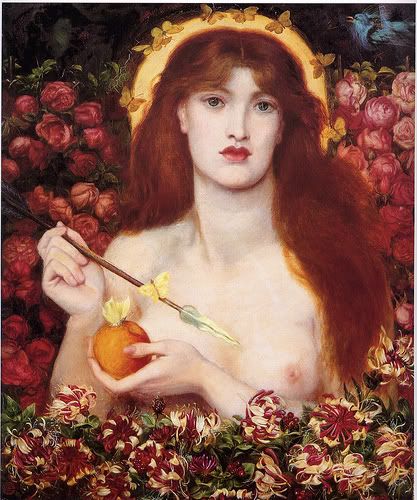
And here we have John Knight's photographic interpretation of the painting: 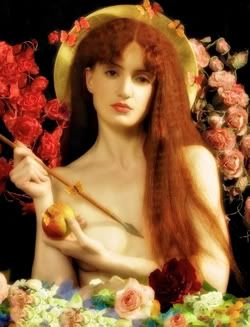
Of course, Knight uses a great deal of image editing software in order to reproduce the paintings, but it would be impossible to make them look much like the originals without it.
His interpretation of Frederick Sandy's "Love's Shadow" is spectacular, though it shies away from the energy and anger of the original. The girl in Knight's version is a quite a bit more coy and far less threatening than Sandys' (who you will recall is actually baring her teeth in the painting).
Knight's version: 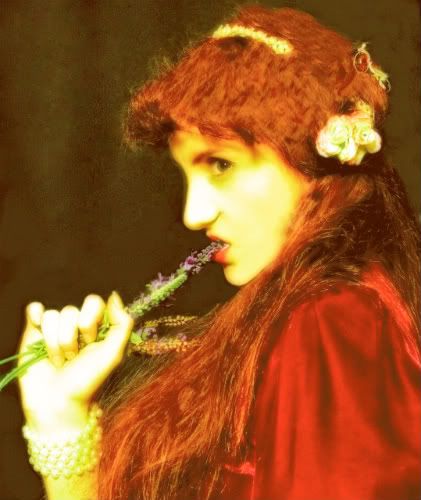
Anthony Frederick Sandys' version - teeth bared, and looking a bit vicious: 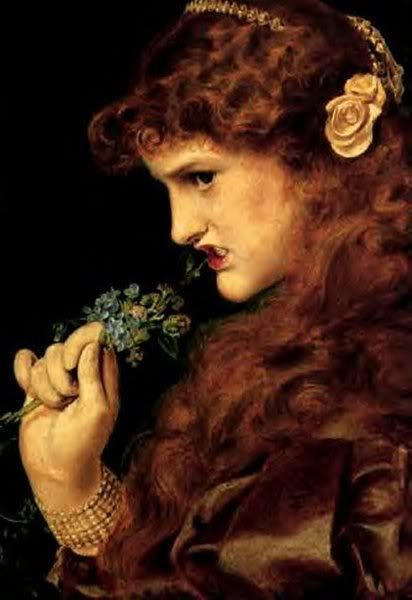
I asked Knight what drew him to Pre-Raphaelite art. He replied that
"the images created by the PRB are amongst the most enduring of all art works ever created. They touch the soul and the heart, they challenge the eye and they transport the viewer back...back to fantasy, to chivalry, to folklore and myth to the stories of our childhood and the dreams of our imagination."
I couldn't agree more!
Be sure to check out John Knight's website for more of his Pre-Raphaelite images. Many are quite extraordinary--I think my favourites are the Venus Verticordia (shown above) and Flaming June.
Posted by
Margaret
at
10:11 AM
6
comments
![]()
![]()
Labels: frederick sandys, photography, pre-raphaelites, rossetti
Thursday, October 8, 2009
Memphis Brooks Museum Hosts "Masterpieces from Museo de Arte de Ponce"
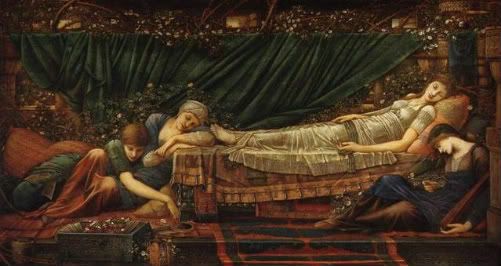
Now through January 10, 2010, the Memphis Brooks Museum will be hosting an exhibit of 56 paintings entitled "Masterpieces from Museo de Arte de Ponce."
The Museo de Arte de Ponce is well-known for it's spectacular Pre-Raphaelite collection, which will be featured prominently in this exhibition. However, the show will also feature paintings from a number of different periods, and includes works from Baroque artist Peter Paul Rubens and the Belle Époque master James Tissot
The Brooks Museum has a couple of events on October 15, 2009 to celebrate the collection, including a "Tea and Tour" from 1:30 - 3 pm. Enjoy tea and treats after a special tour with the docents ($3 per person). The event is sponsored by the Brooks Museum League. Reservations are required, please call 901.544.6242. A dinner will also be held the same night--call the number above for more information.
For more information, check out the Brooks Museum Website
Posted by
Margaret
at
11:49 AM
3
comments
![]()
![]()
Labels: museums, news, pre-raphaelites

